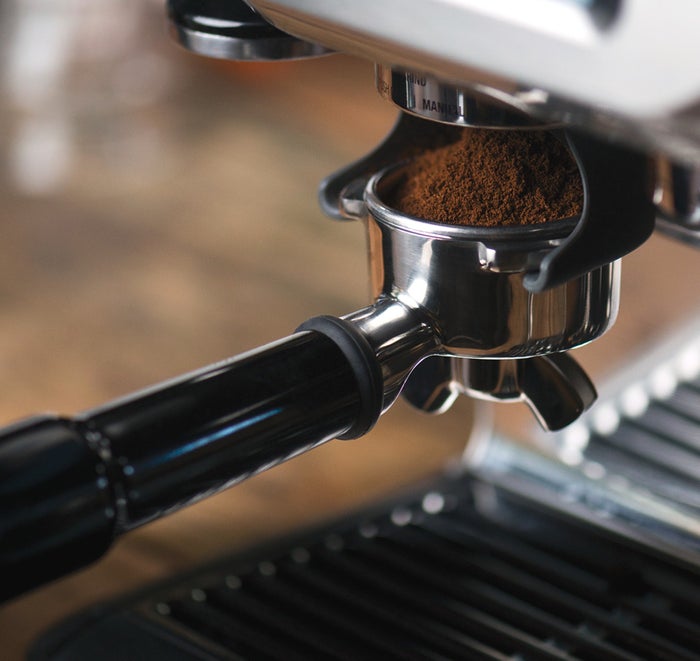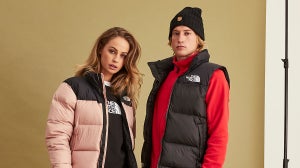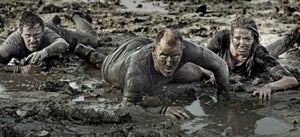
In the UK we get through 95 million cups of coffee in a day, putting it ahead of our beloved tea. We can all appreciate a good cup, but can we make one?
If your bank account is weeping from the strain of all those flat whites, it might be time to invest in some equipment and learn the science of brewing barista-quality coffee at home. A great way to impress guests and an even better way to start your morning, making good coffee at home doesn’t have to be difficult, you just have to get your method down. And to get you started, we talked to Sam Binstead, owner of Upshot, a coffee shop in Sheffield that keeps quality and sustainability at its core.
Talking us through the process, top tips and biggest mistakes, here’s Sam’s advice for making barista-quality coffee at home.

First things first, can you talk us through a brief step-by-step for brewing the perfect barista-quality cup?
To start with, regardless of what you're using you always want to weigh out your coffee, this makes all the difference. I like to use around 18g of coffee for 300g of water. Then get your water ready and up to the right temperature. We want to brew with water just off the boil.
If you're using a cafetiere-
Pour some hot water into your cafetiere to preheat it, discard.
Grind your coffee fairly course, about the texture of fancy sea salt, and then pop it into the cafetiere. Gently tap/shake to settle the grounds into a flat bed
With your cafetiere set on the scales, start your timer and pour the water in all the way up to 300g.
Quickly but gently give all of the grounds a stir. We want to make sure all of the coffee is wet as soon as possible to make sure all of the grounds extract at the same rate.
Wait. Don’t do anything. Just sit and wait.
Now at about 4 minutes put the plunger on to the brewer but don't press it down!
Leaving the plunger at the top of the jug, use it as a strainer and carefully pour your coffee into a mug. If you’re brewing a big one for a couple of you then make sure you decant all of the coffee into something else. Leaving it in with the grounds will make it turn bitter.
Enjoy! If your coffee is too strong and bitter then either use a coarser grind or steep it for less time. Likewise, if it's weak or a bit sour then leave it in for longer, or use a finer grind! Using a timer and scales will help you to dial in just how you like it.

If you're using a pour-over brewer-
Rinse the filter paper, this also preheats the brewer and your mug which is important.
Grind your coffee fairly course, about the texture of fancy sea salt, and then pop it into the brewer. Gently tap/shake to settle the grounds into a flat bed.
With your brewer and mug set on the scales, start a timer and quickly pour on around 50g of water. Ideally, you want a kettle with a longer gooseneck spout for the best control.
Quickly but gently give all of the grounds a stir. We want to make sure all of the coffee is wet before we hit the 30-second mark.
At 30 seconds, carry on pouring water slowly in concentric circles all the way up to 300g. Again we’re trying to make sure all of the grounds are getting the same attention.
All of your water should be in by around 1 minute to 1.5 minutes, you’re then going to give it one last stir to make sure there are no grounds stuck to the paper above the water level.
Let all the water drip through. Ideally, this should take no longer than 3 minutes, and no less than 2 and a half but that’s not a steadfast rule. If your coffee isn’t strong enough then grind finer so it takes longer, and if it’s too strong then grind coarser so the water flows quicker!
And what about milk?
If your order is always a cappuccino or flat white, an espresso machine with a steam arm is always going to be the best option. You want to start with the tip just below the surface, and then as the air incorporates it should increase in volume nicely without going too foamy. If it sounds like an airplane taking off then your steam wand is submerged too deep and your milk is too hot!
Without an espresso machine, you can get standalone milk frothers, or simply heat milk in a pan, and then putting it in a cafetiere and plunging a few times will get it all aerated.

What’s the difference between filter and espresso?
The main mechanical differences between espresso and filter is that espresso happens under pressure. The result is that you get a strong, rich, highly flavoured ‘shot’ of coffee in around 30 seconds. This is ideal as the base for milky drinks as the flavour really cuts through and balances nicely with the sweetness of the milk. Filter coffee is a slower process but results in a more nuanced, softer flavoured, longer drink.
If you want an espresso or prefer milky coffees, then an espresso machine is the one for you. But if you drink your coffee black or with just a dash of milk, then I much prefer the flavour of brewed filter coffee.
What should we look for in a good quality coffee?
You want to make sure you’re buying freshly roasted beans. Check the date on the bag. It’s at its absolute best up to a month off of roast, after this the quality will start to drop off a touch. Generally speaking, the more information that’s on the bag about where it’s from and who grew it, the better. It shows that care has been taken in sourcing it, which hopefully means they’ll care when roasting it too! Buy your coffee from a local, independent coffee shop if you can, as they’ll be buying small batches from quality roasters.

Why should we grind our own coffee at home?
This is honestly the most important step for me. I mentioned earlier about buying freshly roasted beans; when you grind the coffee you’re massively increasing its exposure to oxygen and it will go stale very fast.
Avoid blade grinders, they just smash the beans up randomly. A burr grinder is designed to give you a uniform grind size, which is really important for a balanced flavour.
What’s the optimum way to store coffee?
Some people say to keep it in the fridge, but I’m not a fan of that. If you’ve got some cheese or other potent foods in there then coffee is way too good at absorbing these aromas!
An air-tight container in a cool place is your best bet. Keeping it in whole bean form instead of ground will also massively prolong its freshness.
https://www.instagram.com/p/Bo3TGc9Ao7J/
Does water quality make any difference?
Huge difference. If your water is too soft then you’ll get dull, lifeless coffee. If your water is too hard then you’ll have an overwhelmingly chalky flavour and all of the intricacies of the brew will be lost. Definitely filter your water, especially if you’re in a hard water area.
https://www.instagram.com/p/BwUh29mANSJ/
What is the biggest mistake people are making when they brew at home?
I think the thing I see with most people is guesswork. Scales make all the difference. Good ingredients and a tight recipe will take your coffee to the next level. Weigh your coffee, weigh your water!
If people take away one piece of advice from this and make one change to their coffee routine, what should it be?
Buy better coffee. No matter what method or lack thereof you’re using to brew, using quality beans will always improve your end cup. Avoid the supermarkets and buy from a speciality coffee shop. It may be that little bit more expensive but you can rest assured your money is going into a much better supply chain. The local shop, their small-batch roastery, and the coffee farmers they buy from all benefit from you drinking better coffee!
If you still want to level up your coffee skills, Upshot offer barista and brewing workshops>>>
SHOP OUR KITCHEN RANGE ON THE HUT NOW>>>
Written by Lucy Harbron








